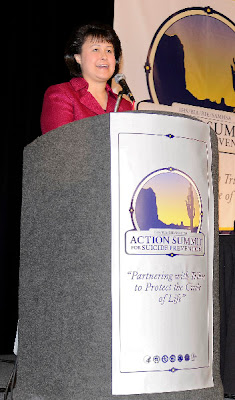This year we celebrate Suicide Prevention Week with revitalized purpose as we welcome a new National Strategy for Suicide Prevention. For the first time since 2001, we have an updated Strategy to guide the nation, drawing on eleven years of growth and advances in our field.
The National Strategy is a call to action to guide suicide prevention in the United States over the next ten years. It outlines four strategic directions, with 13 goals and 60 objectives that are meant to work together across all levels of government - and with various local and community programs and activities - to reduce the toll of suicide in the nation. Some of these objectives will best be advanced at the national level, while others will be most appropriately handled at state and local levels. At all levels, partners from different sectors should be involved, be they public or private.
This new National Strategy reminds us all that we all have a role to play in advancing suicide prevention efforts, and recommends specific ways we can get involved. If you are part of a state or local suicide prevention group or coalition, you may be wondering what the new strategy means for you.
As the Strategy is launched, many will consider taking steps to update their own state or local suicide prevention plans. Our hope is that you will use the revised Strategy as a guide and consider it a key resource that should be an important part of your local strategic planning efforts. At the same time, we want to caution that not every recommendation in the Strategy should be applied literally in every state and community.
The National Strategy offers a wonderful menu of options, but it’s up to state and local groups to prioritize what will work best and reach those most at risk in their communities. And the way to figure out what are the best options is simple: Start with your data. Only by looking at data on suicide risk (both quantitative and qualitative) in your community can you focus on the areas of greatest need and effectively pursue programs that reduce suicidal behaviors and save lives.
Based on local data, what groups are at highest risk for suicide in your community? What are the factors that put them at risk or may be protective? What approaches would be best to pursue? Without the data to give you answers to these questions, you really can’t know who is most at risk in your community and what strategies have the best chance of saving lives.
This blog post is cross posted from the Suicide Prevention Resource Center.
